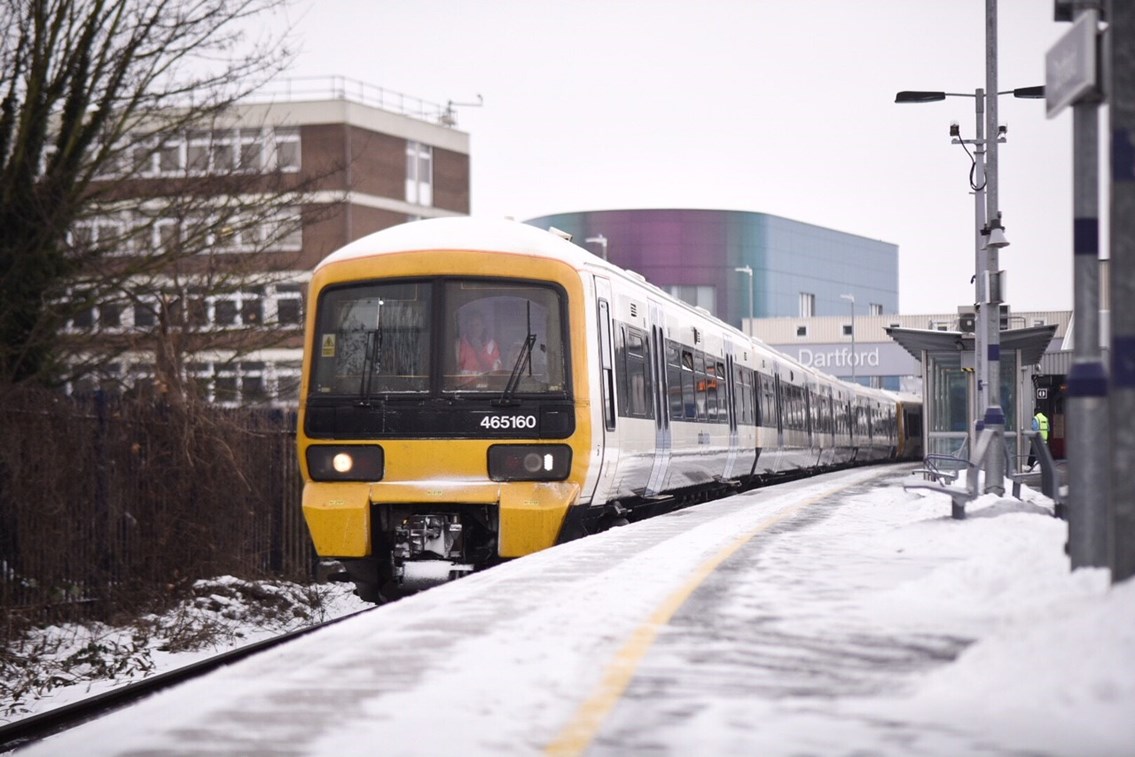Monday 25 Mar 2019
Network Rail & Southeastern respond to RAIB report into Lewisham train disruption during heavy snow in March 2018
- Region & Route:
- Southern
In a joint statement, Network Rail and Southeastern said: "The Beast from the East in 2018 brought about some of the most challenging weather conditions we've seen in the south east for more than a decade.
"Unfortunately, this led to a serious incident in Lewisham which has taught us many lessons and inspired positive change, especially in how we've prepared for this winter.
"We're really sorry to passengers who were on board for what was an unpleasant and distressing experience. Together with our colleagues at Southeastern, we've taken action to minimise the chance of this happening again.
"We have improved the way we manage extreme weather, examined ways to keep the power on when the conductor rail fails and updated our procedures for communicating with passengers during emergencies."
Following an independent report we commissioned into the Lewisham incident, published last August, Network Rail and Southeastern are:
- Delivering new training to more than 3,500 staff, including scenario simulation of major incidents to ensure staff are well-rehearsed on emergency procedures.
- Network Rail is investigating expanding the installation of conductor rail heating to include key locations, like Lewisham, which although not prone to freezing could potentially benefit from heating in extreme weather events.
- A trial of a more effective anti-icer on our fleet of snow and ice treatment trains is being tested on the Sheerness line this winter. In addition, Southeastern is exploring the use of ice-breaker shoes on some passenger trains.
- We are eagerly awaiting the results of a trial on our neighbouring Wessex route, where they are testing the use of gapping leads. These are cables that can be physically attached to the third rail, so stranded trains can continue to receive power to run toilets, lights and PA systems, for example – all serious problems encountered in the Lewisham incident.
- We’ve now deployed airwave radios to our incident response teams to enhance our command and control arrangements when managing disruption
- Network Rail and Southeastern worked with specialist consultants on planning and preparation for severe weather. This included examining the criteria needed to decide if trains should be running in extreme weather, such as the snow and icy conditions experienced in March.
- We are also improving how they communicate during extreme winter weather. This includes investment in improved systems for providing information to customers; revised protocols for communication between teams on the ground and control centres; more effective procedures for liaising between different organisations involved in any future incident.
- Adjusted our extreme weather forecasting processes to better predict ice build-up on the conductor rail. Detailed forecasts from weather experts MetDesk help formulate local action plans during adverse weather to minimise disruption to passengers. The forecasts cover not just the weather but how the conditions will impact on specific railway infrastructure such as the tracks and conductor rails. A network of hundreds of monitoring stations also provides real-time weather data, enabling Network Rail to respond to conditions as they develop in real time.
- We have invested in 20 special backpacks, which can carry heated de-icer fluid. These will be supplied to mobile operations manager depots in key locations and be used when the shoe gear of stranded trains need to be de-iced quickly to ensure power returns to the train.
Contact information
Passengers / community members
Network Rail national helpline
03457 11 41 41
Latest travel advice
Please visit National Rail Enquiries
Journalists
Paul Dent-Jones
paul.dent-jones@networkrail.co.uk
About Network Rail
We own, operate and develop Britain's railway infrastructure; that's 20,000 miles of track, 30,000 bridges, tunnels and viaducts and the thousands of signals, level crossings and stations. We run 20 of the UK's largest stations while all the others, over 2,500, are run by the country's train operating companies.
Usually, there are almost five million journeys made in the UK and over 600 freight trains run on the network. People depend on Britain's railway for their daily commute, to visit friends and loved ones and to get them home safe every day. Our role is to deliver a safe and reliable railway, so we carefully manage and deliver thousands of projects every year that form part of the multi-billion pound Railway Upgrade Plan, to grow and expand the nation's railway network to respond to the tremendous growth and demand the railway has experienced - a doubling of passenger journeys over the past 20 years.
Follow us on Twitter: @networkrail
Visit our online newsroom: www.networkrailmediacentre.co.uk

